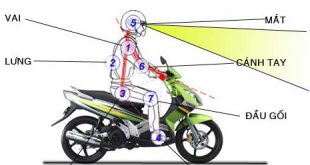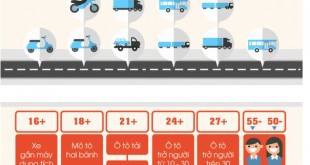Đi phượt là một hình thức du lịch tự do, bụi bặm, không theo lịch trình hay kế hoạch cụ thể, không có hướng dẫn viên hay dịch vụ du lịch nào. Thay vào đó, bạn tự lái xe (thường là xe máy) hoặc đi bộ đến những địa điểm mình muốn, tự khám phá và trải nghiệm những điều mới mẻ.
Tuy nhiên, phượt tiềm ẩn rất nhiều nguy hiểm nên cần chuẩn bị kỹ càng trước khi đi. Nên kiểm tra xe máy, lắp thêm đèn Led chiếu sáng, chuẩn bị dụng cụ sửa xe, đồ bảo hộ, giấy tờ tùy thân và nắm chắc các thông tin về lịch trình, địa điểm, số điện thoại cứu hộ, thời tiết, thông báo với người thân… để chặng hành trình diễn ra an toàn và suôn sẻ.
Thời điểm đi phượt đẹp nhất thường rơi vào mùa xuân và mùa thu, tuy nhiên còn dựa vào các yếu tố khác như điểm đến, sở thích cá nhân, mô hình phượt. Khi đi phượt, bạn có thể cân nhắc lựa chọn đi một mình hay đi theo đoàn dựa trên sở thích, kinh nghiệm và điều kiện. Nếu có kinh phí eo hẹp, chưa có kinh nghiệm và thích tụ tập nhiều người thì cân nhắc đi phượt theo đoàn. Ngược lại muốn tự do trải nghiệm, lên lịch trình và khám phá thiên nhiên thì có thể đi một mình.
Bài viết này sẽ cung cấp cho bạn một số hướng dẫn chi tiết về kinh nghiệm đi phượt bằng xe máy an toàn, cùng khám phá nhé!

Kinh Nghiệm Chuẩn Bị Cho Chuyến Đi Phượt An Toàn, Hiệu Quả
Để cho chặng hành trình phượt diễn ra an toàn và suôn sẻ, bạn nên kiểm tra và đảm bảo xe vận hành tốt, gắn thêm đèn Led chiếu sáng, chuẩn bị đồ bảo hộ cá nhân, đồ sửa chữa xe, giấy tờ cá nhân, xem dự báo thời tiết, trao đổi thông tin với người thân…
1. Kiểm tra xe kỹ càng
Kiểm tra và bảo dưỡng xe trước khi thực hiện cuộc hành trình dài rất quan trọng để đảm bảo an toàn và khả năng vận hành xe. Dưới đây là một số hướng dẫn chi tiết về việc kiểm tra các thành phần cơ bản trên xe trước khi đi:
- Lốp xe: Kiểm tra độ hao mòn của lốp bằng cách xem xét độ sâu của rãnh gai. Nếu rãnh gai đã mòn xuống dưới mức an toàn (thường là 1.6mm), lốp cần được thay mới. Đồng thời, kiểm tra áp suất lốp và bơm lốp sao cho đạt áp suất đề xuất trong hướng dẫn sử dụng của nhà sản xuất.
- Nhớt: Nếu nhớt quá đục, đen hoặc mức nhớt quá thấp, hãy thay nhớt mới theo hướng dẫn của nhà sản xuất. Đảm bảo sử dụng loại nhớt phù hợp với xe của bạn.
- Nhông sên dĩa: Kiểm tra tình trạng của nhông sên dĩa xem có mòn hay hỏng hóc gì không để không ảnh hưởng tới khả năng vận hành của xe.
- Kiếng chiếu hậu: Đảm bảo rằng xe có hai kiếng chiếu hậu hoạt động tốt và đủ tầm quan sát để đảm bảo an toàn khi di chuyển trên đường.
- Kiểm tra các chi tiết khác: Kiểm tra các chi tiết như gấp, mâm, bạc đạn và phuộc xe… để đảm bảo lái xe an toàn trong suốt quãng đường.
Nên nhờ người có chuyên môn để kiểm tra, tránh sai sót xảy ra ảnh hưởng tới chất lượng vận hành của xe.
2. Gắn thêm đèn Led
Nên gắn thêm đèn Led để hỗ trợ tăng cường khả năng chiếu sáng và tầm nhìn trong các điều kiện mờ, tối tăm hoặc khó khăn trên địa hình phượt. Bạn lắp đặt đèn Led L4, G4, G5, C5, C6… trên càng hoặc gắn trên thanh nắp cốp xe hoặc trên giá nón. Đảm bảo rằng đèn không gây cản trở cho việc lái xe và có độ bền, chịu được va đập trong môi trường off-road. Có thể kết hợp sử dụng các bộ giá đỡ hoặc kẹp đèn chất lượng để đảm bảo đèn được gắn chắc chắn và không gây rung lắc trong quá trình di chuyển.
Lưu ý việc gắn đèn LED trên xe đi phượt cần được thực hiện bởi thợ chuyên nghiệp để đảm bảo tuân thủ quy định pháp luật và đảm bảo an toàn cho người tham gia giao thông.
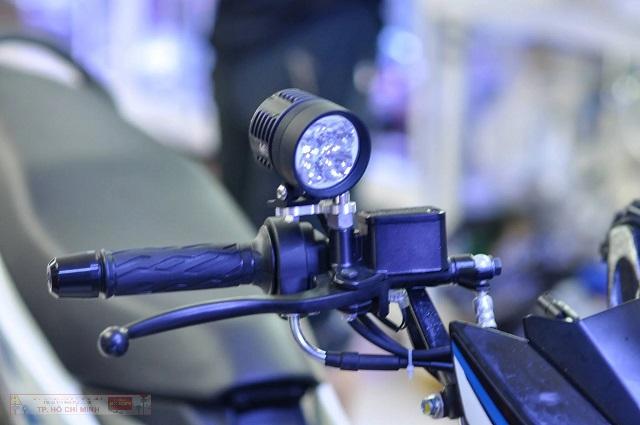
3. Chuẩn bị công cụ để tự khắc phục khi thủng lốp
Nhằm phòng ngừa trường hợp thủng lốp trên đường, bạn có thể chuẩn bị các dụng cụ đơn giản để xử lý như ruột xe, lốp dự phòng và bộ bơm hơi điện tử. Đồng thời, mang theo găng tay, băng cá nhân và một chiếc khăn sạch để bảo vệ tay và giữ cho bạn sạch sẽ trong quá trình sửa chữa.
Lưu ý rằng việc thay lốp và sửa chữa lốp thủng có thể đòi hỏi kỹ năng và kinh nghiệm. Nếu bạn không tự tin hoặc không có kỹ năng cần thiết, hãy tìm đến một thợ sửa chữa xe hoặc dịch vụ cứu hộ để giúp bạn khắc phục tình huống thủng lốp khi đi phượt.
4. Trang bị đầy đủ các món đồ bảo hộ cá nhân
Nên chuẩn bị đầy đầy đủ các món đồ bảo hộ cá nhân cần thiết như nón bảo hiểm, trang phục, áo mưa,…
Nón bảo hiểm:
- Nón bảo hiểm là vật dụng bảo hộ quan trọng nhất, cần lựa chọn loại có độ an toàn cao, vừa vặn và thoải mái.
- Ưu tiên sử dụng nón ¾ hoặc fullface để bảo vệ toàn bộ đầu. Hạn chế nón ½ vì an toàn kém hơn.
- Nên chọn nón có kính chắn gió để tránh bụi bẩn, côn trùng và tăng tầm nhìn.
Trang phục:
- Chú trọng giữ ấm khi đi xa bằng áo khoác da, quần dài, giày cổ cao (bảo vệ mắt cá chân).
- Tuyệt đối không đi dép hoặc sandal vì nguy cơ tổn thương do đá văng.
- Lựa chọn quần áo thoải mái, rộng rãi, hạn chế bó sát gây mệt mỏi.
- Nên sử dụng quần áo có giáp bảo hộ tại các vị trí như khủy tay, đầu gối, ngực, ống quyển. Mang theo găng tay để bảo vệ tay.
Áo mưa:
- Mang theo áo mưa để đề phòng thời tiết xấu.
- Ưu tiên loại áo mưa bộ (quần và áo riêng). Tránh sử dụng áo mưa cánh dơi vì vướng víu, nguy hiểm khi lái xe.
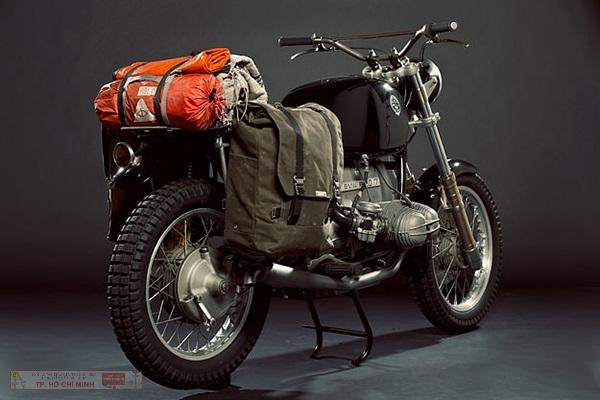
5. Lịch trình và địa điểm
Xác định rõ lịch trình và các địa điểm bạn muốn khám phá. Nghiên cứu về các tuyến đường, điểm dừng chân, khách sạn hoặc khu cắm trại trên đường đi để có một kế hoạch chi tiết.
Nên tìm hiểu kỹ thông tin về cung đường phượt sẽ đi qua trên internet, thông qua người quen, hội nhóm phượt trên mạng xã hội… Ghi lại những thông tin cần thiết về các tuyến đường đi, địa hình, những nút giao thông nguy hiểm, dễ đi lạc… để có sự chuẩn bị tốt nhất, hạn chế xảy ra sự cố ngoài ý muốn.
6. Bảo hiểm
Mua bảo hiểm xe cộ theo quy định của pháp luật. Nếu bạn đi phượt ở nước ngoài, hãy xem xét sở hữu thêm bảo hiểm du lịch để bảo vệ mình trong trường hợp khẩn cấp hoặc tai nạn.
7. Mang đầy đủ giấy tờ tùy thân
Mang theo đầy đủ giấy tờ xe, giấy phép lái xe và các giấy tờ tùy thân khác. Photo công chứng các giấy tờ để đề phòng trường hợp bị mất. Điều này rất cần thiết để có thể thuê phòng khách sạn, nhà nghỉ, vượt qua các chốt kiểm tra của cảnh sát giao thông…
8. Xem dự báo thời tiết
Kiểm tra dự báo thời tiết trước khi lên đường. Điều này giúp bạn chuẩn bị phù hợp với điều kiện thời tiết như áo mưa, nón chống nắng hoặc áo ấm. Đồng thời hạn chế đi phượt vào những thời điểm khí hậu không tốt như bão, lốc xoáy, mưa lớn…
9. Trao đổi thông tin
Hãy thông báo cho người thân, bạn bè hoặc người tin cậy về lịch trình và thông tin liên lạc. Điều này giúp họ nắm bắt được vị trí của bạn và có thể liên lạc khi cần thiết.
Lưu trữ số điện thoại cần thiết như dịch vụ cứu hộ, trạm xăng, bệnh viện và cảnh sát nhằm nhận được trợ giúp kịp thời trong trường hợp khẩn cấp.
Những Câu Hỏi Liên Quan Đến Việc Chuẩn Bị Cho Chuyến Đi Phượt
1. Lên kế hoạch cho chuyến phượt xe máy cần lưu ý những gì?
- Xác định rõ điểm đến, thời gian di chuyển
- Tìm hiểu về tuyến đường, địa điểm tham quan
- Dự trù kinh phí cho chuyến đi
- Chuẩn bị chỗ nghỉ ngơi
- Chia sẻ lịch trình với người thân, bạn bè
2. Nên chuẩn bị đi phượt vào thời điểm nào?
Thời điểm đi phượt phù hợp khá linh động dựa theo điểm đến, sở thích cá nhân, mô hình phượt nhưng thường rơi vào mùa xuân và mùa thu. Lý do:
Mùa xuân (tháng 2 – 4):
- Thời tiết mát mẻ, dễ chịu, thích hợp cho việc di chuyển.
- Cây cối đâm chồi nảy lộc, mang đến cảnh quan tươi đẹp.
- Nhiều lễ hội diễn ra, tạo cơ hội trải nghiệm văn hóa địa phương.
Mùa thu (tháng 9 – 11):
- Thời tiết mát mẻ, ít mưa, thích hợp cho việc di chuyển.
- Cảnh quan thiên nhiên rực rỡ với sắc vàng, đỏ của lá cây.
- Ít du khách, giá cả dịch vụ thường rẻ hơn.
Lưu ý:
- Nên tránh đi phượt vào mùa mưa bão hoặc mùa nắng nóng gay gắt.
- Nên theo dõi dự báo thời tiết trước khi đi phượt để có sự chuẩn bị phù hợp.
- Nên chọn thời điểm đi phượt phù hợp với sức khỏe, lịch trình công việc và sở thích cá nhân.
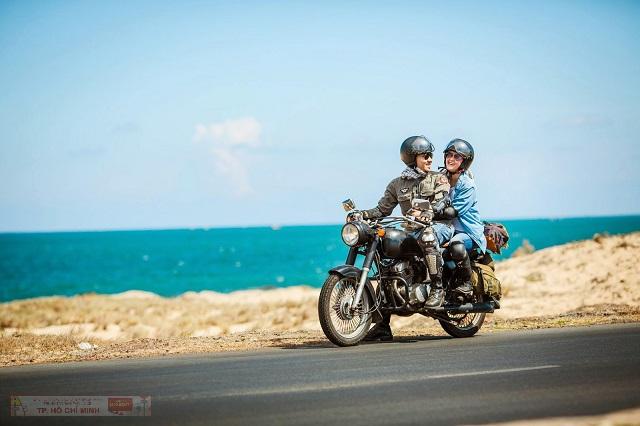
3. Nên đi phượt xe máy theo đoàn hay đi một mình?
Việc lựa chọn đi phượt theo đoàn hay đi một mình tùy thuộc vào sở thích, tính cách và điều kiện của mỗi người.
Dưới đây là một số ưu và nhược điểm của từng lựa chọn để bạn tham khảo:
| Đi phượt một mình | Đi phượt theo đoàn | |
| Ưu điểm | Nhận được sự hỗ trợ từ các thành viên khác trong trường hợp gặp sự cố. Có cơ hội để bạn giao lưu, kết bạn và chia sẻ những trải nghiệm thú vị với những người có cùng sở thích. Tiết kiệm chi phí. |
Tự do lựa chọn lịch trình, điểm đến và làm những điều mình thích. Thử thách bản thân và khám phá những giới hạn của mình. Có thời gian để suy ngẫm và kết nối với thiên nhiên. |
| Nhược điểm | Phải tuân thủ lịch trình chung và có thể không được làm những điều mình thích. Gặp khó khăn trong việc thống nhất ý kiến về các vấn đề như lịch trình, điểm đến… Dễ mâu thuẫn với các thành viên khác do tính cách, sở thích khác nhau. |
Không có sự hỗ trợ từ ai nếu gặp sự cố. Cảm thấy cô đơn, đặc biệt là khi đi đến những nơi xa lạ. Gặp khó khăn trong việc giải quyết những vấn đề phát sinh trong quá trình di chuyển. |
4. Những kỹ năng lái xe cần thiết khi đi phượt?
Kỹ năng điều khiển xe:
- Làm chủ tốc độ: Luôn đi đúng tốc độ cho phép, không phóng nhanh vượt ẩu, đặc biệt ở những địa hình hiểm trở.
- Quan sát: Luôn chú ý quan sát xung quanh, đặc biệt là trước khi chuyển hướng, vượt xe, hay qua những đoạn đường cua gấp.
- Làm chủ tay lái: Nắm vững kỹ thuật phanh, ôm cua, xử lý tình huống bất ngờ.
- Đi đúng phần đường: Tuân thủ luật giao thông, đi đúng phần đường quy định.
Những chuyến phượt xa, lái xe nhiều khiến bạn bị mỏi lưng… vậy làm cách nào để hạn chế tình trạng mỏi lưng khi lái xe? Tham khảo ngay các tư thế ngồi lái xe máy không bị mỏi lưng giúp bạn có những chuyến hành trình an toàn, trọn vẹn nhất.
Kỹ năng xử lý tình huống:
- Xử lý khi gặp sự cố xe: Biết cách sửa chữa những hư hỏng đơn giản, hoặc có phương án xử lý khi xe gặp vấn đề nghiêm trọng.
- Xử lý khi gặp thời tiết xấu: Biết cách di chuyển an toàn khi gặp mưa lớn, sương mù, hoặc trời tối.
- Xử lý khi gặp tai nạn: Biết cách sơ cứu cơ bản và gọi cấp cứu khi cần thiết.
Hi vọng hướng dẫn chuẩn bị cho chuyến đi phượt bằng xe máy an toàn trên sẽ hữu ích cho bạn. Liên hệ với Trung Tâm Đào Tạo & Sát Hạch Lái Xe TP. HCM để được hướng dẫn lái xe an toàn, thi bằng lái xe máy, ô tô chuyên nghiệp hiệu quả.
 Trường đào tạo & thi sát hạch lái xe tại TP Hồ Chí Minh Trường đào tạo, dạy học và thi sát hạch lái xe máy, xe oto ở Thành Phố Hồ Chí Minh
Trường đào tạo & thi sát hạch lái xe tại TP Hồ Chí Minh Trường đào tạo, dạy học và thi sát hạch lái xe máy, xe oto ở Thành Phố Hồ Chí Minh

